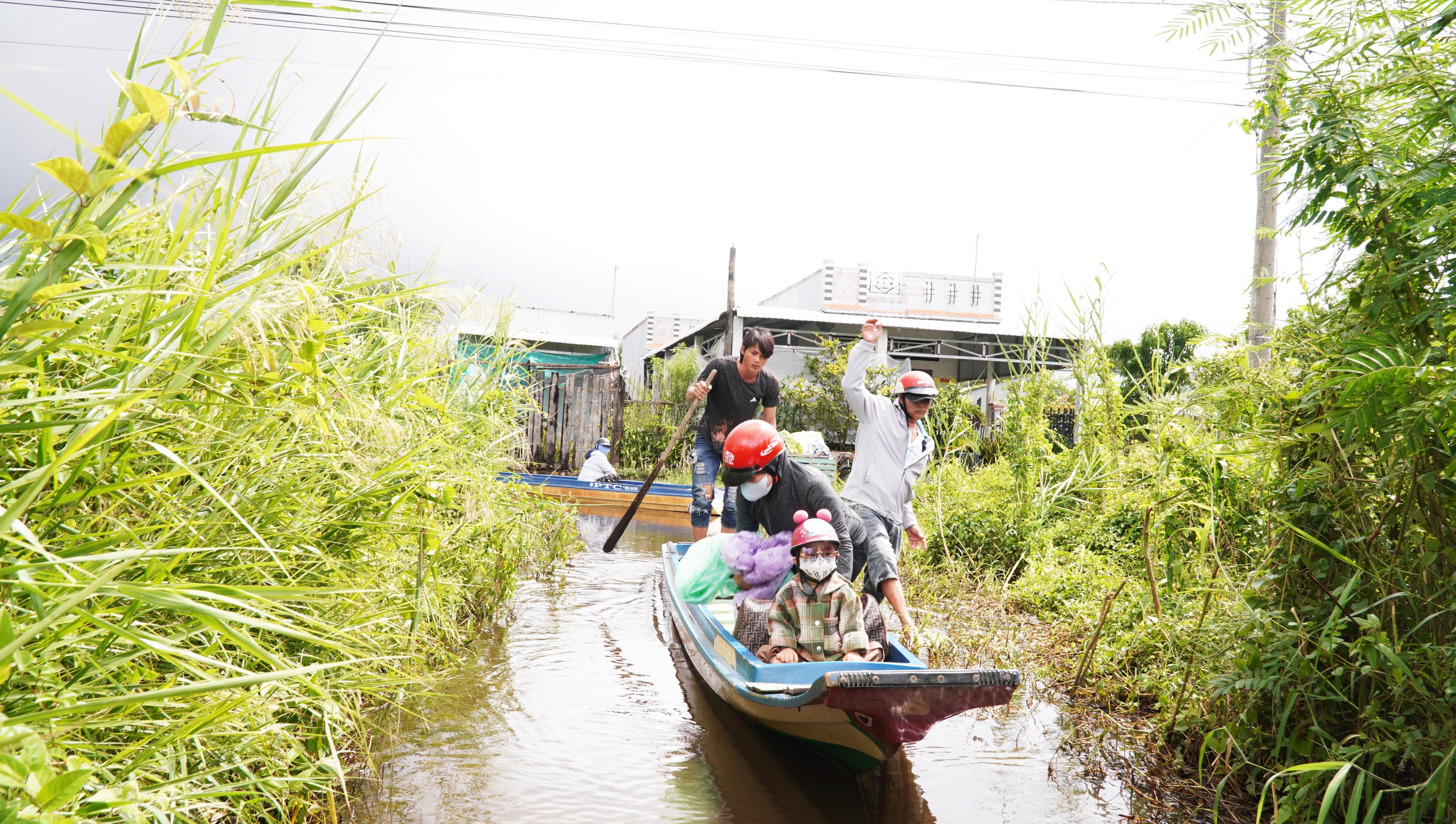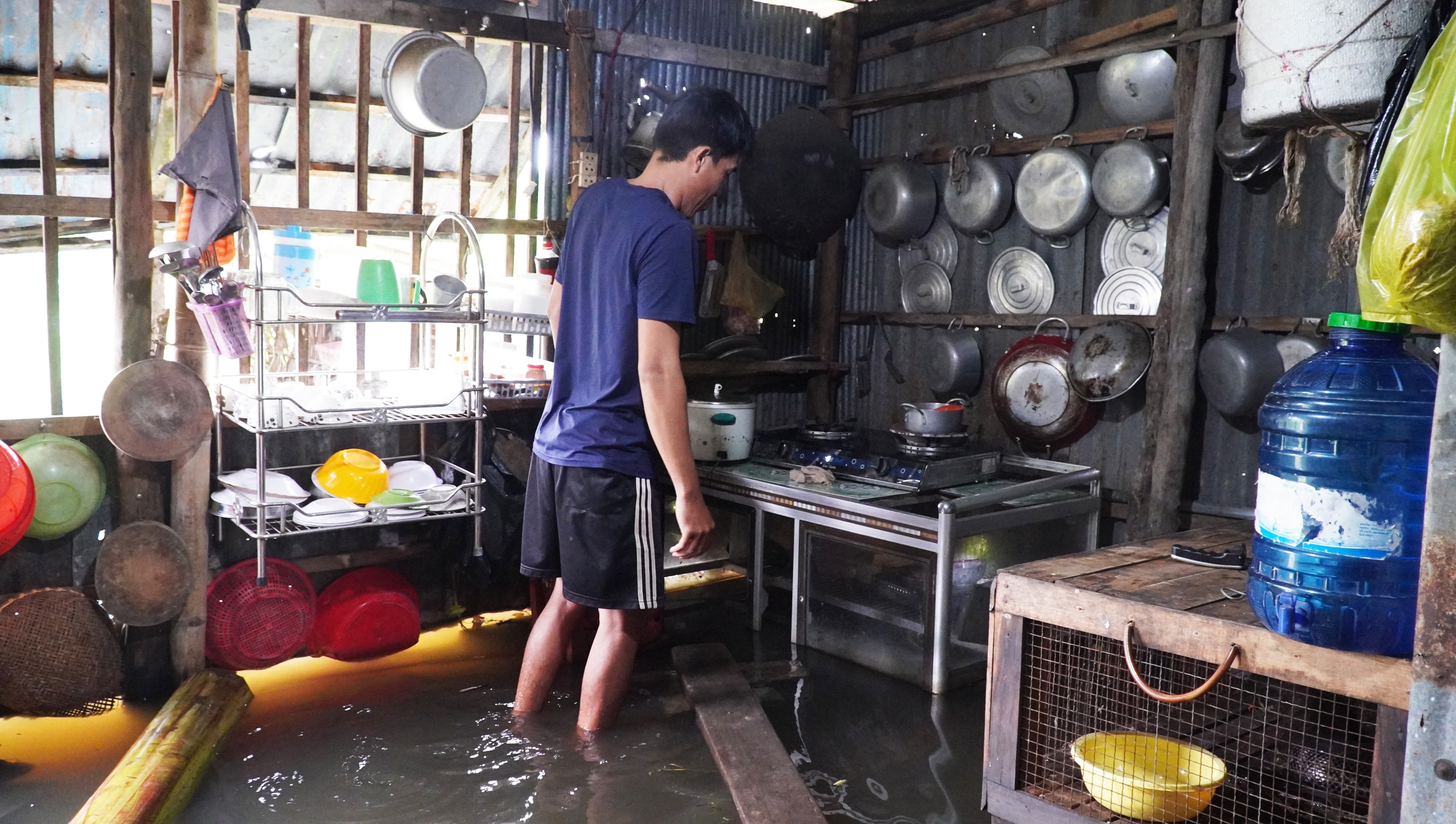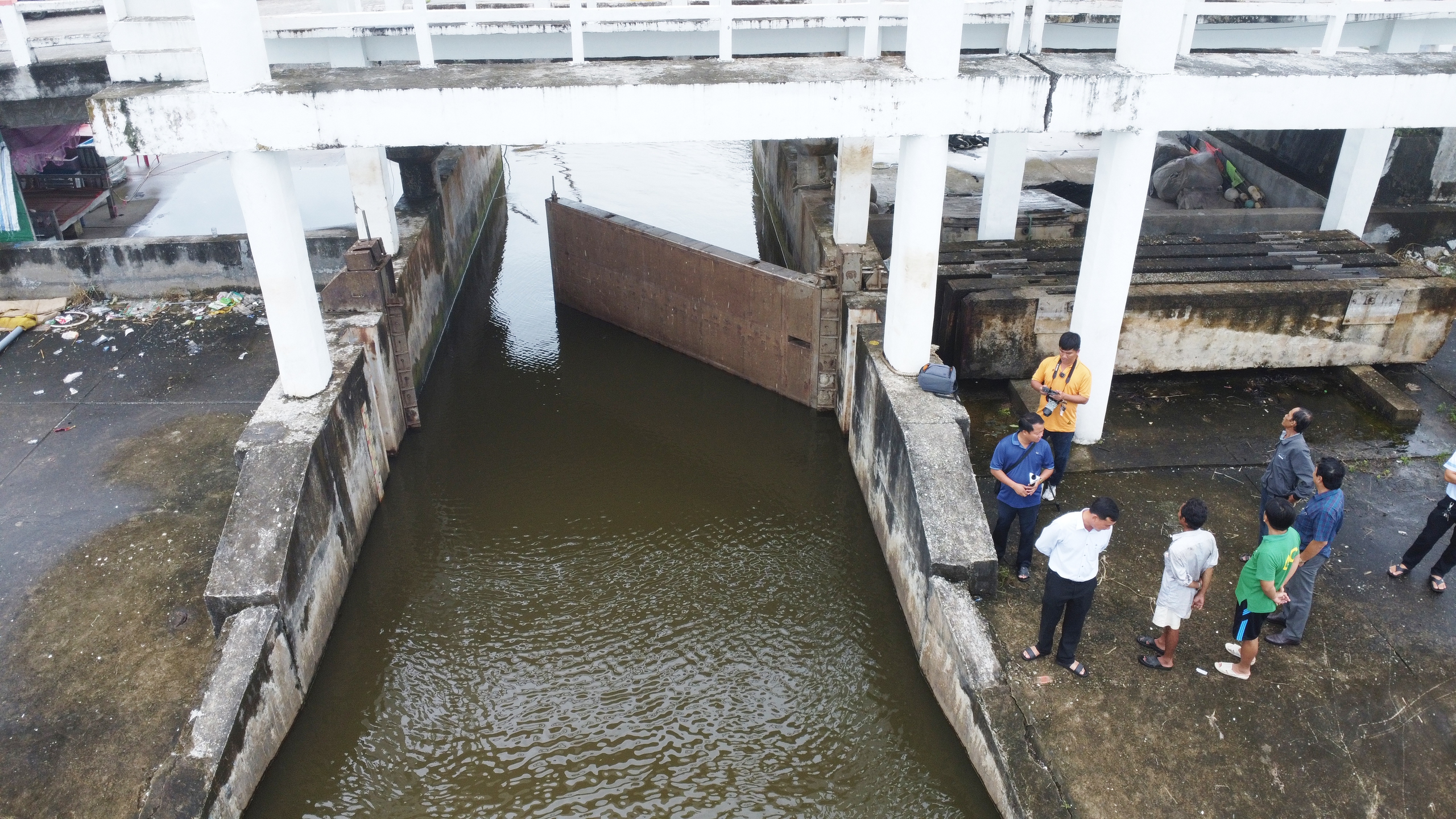
Coastal residents in southernmost Vietnam paddle boats on flooded roads despite not being in flood zone
More than 160 households in a resettlement area in Ca Mau Province, southern Vietnam have been living in floodwaters for nearly half a month. Roads there have turned into canals and motorbikes are unusable, forcing residents to rely on boats for daily travel.

Despite owning several motorbikes, residents must rely on boats to travel on flooded concrete roads in the Kinh Tu resettlement area in Khanh Hung Commune, Ca Mau Province, southern Vietnam. Photo: Thanh Huyen / Tuoi Tre
Locals said the problem has persisted for years over a lack of proper drainage upgrades.
Roads in the Kinh Tu resettlement area in Khanh Hung Commune sit lower than surrounding land, trapping rainwater and high tides that cannot drain into the sea.
Nguyen Van Huu, a local resident, said the flooding season usually lasts from July to December in the lunar calendar.
"If your house is low, it's bound to flood," he said.
Water often rises half a meter to nearly a meter above the road, making motorbike travel impossible.
Many families have purchased small boats to take their children to school or go to the market.
Tran Thong Minh, who has lived there for six years, said he has spent four of them "paddling boats on the road."
Students often arrive at school soaked, and some families have moved away in search of work elsewhere.
Vo Hoang Sa, another resident, said the resettlement area, built over nine years ago, has been flooded every year for the past four years.
"Cars can't run, trees can't survive. The only solution is to raise the road level and widen the drainage system to the sea," he said.
Ho Song Toan, chairman of the commune administration, told Tuoi Tre (Youth) newspaper that high tides prevent inland water from draining properly into the sea. The commune has repeatedly requested funding for repairs but has yet to receive approval.
The former Tran Van Thoi District operates seven drainage pumping stations, but their capacity is inadequate.
Some stations pump continuously, yet water still flows back into residential areas because of uncoordinated culvert systems that reduce drainage efficiency.
Ca Mau is not typically a flood-prone province, yet during high tides, the sight of boats gliding over paved roads has become normal for Kinh Tu residents, who say they long for a truly resettled and stable life.

Some residents use motorized boats for faster and easier transportation. Photo: Thanh Huyen / Tuoi Tre

Children are ferried by boat to the dyke area before heading to school. Photo: Thanh Huyen / Tuoi Tre

Those without boats wade through knee-deep water on submerged roads. Photo: Thanh Huyen / Tuoi Tre

Residents lift household items to avoid flood damage as stagnant water causes odor and unsanitary conditions. Photo: Thanh Huyen / Tuoi Tre

A small boat is kept docked in front of a house for daily travel during the flood season. Photo: Thanh Huyen / Tuoi Tre

Despite being protected by a dyke from the western coast, the former Tran Van Thoi District in Ca Mau Province, southern Vietnam still suffers from widespread flooding. Photo: Thanh Huyen / Tuoi Tre

Locals believe the flooding is partly due to malfunctioning automatic culverts that restrict water flow. Photo: Thanh Huyen / Tuoi Tre

Pumping stations are running at full capacity, but their effect is limited as water flows back through nearby drains. Photo: Thanh Huyen / Tuoi Tre
Minh Duy - Thanh Huyen / Tuoi Tre News